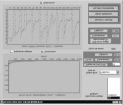info.aee.net
the business voice of advanced energy ILLINOIS' ELECTRIC POWER SYSTEM AND THE CLEAN POWER PLAN The U.S. Environmental Protection Agency (EPA) will soon release the final rule for carbon emissions from existing power plants, called the Clean Power Plan (CPP). The rule represents the next step in the process of carbon regulation that began with the Supreme Court's determination in 2007 that carbon dioxide (CO )

